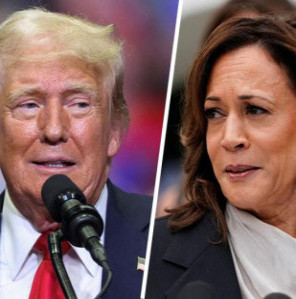Last week, US Navy Secretary Kenneth J. Braithwaite announced an initiative called "Formidable Deterrence". It is planned to create a new numbered fleet with a base in Singapore to operate in the Indian-Pacific region (IPR). Braithwaite announced this intention at the annual Symposium of the Naval Submarine League in Arlington (Virginia), writes the American Sea Power magazine.
"We want to put the new fleet in the crossroads between the Indian and the Pacific oceans," the US Navy chief explained. The new unit's area of responsibility may include waters controlled by the 7th US fleet. "If we’re really going to have an Indo-Pacom (US command in the Indian-Pacific region – ed. note) footprint, we can’t just rely on the 7th Fleet in Japan," Kenneth Braithwaite added. According to the Pentagon, the main reason for creating a new fleet is the inclusive growth of the Chinese Navy. It is not by chance that the contemplated fleet has been assigned the 1st number, which indicates the region's importance for Washington and the severity of Beijing's "threat".
However, some experts discourage from taking Braithwaite's plans for a new fleet in the IPR all that seriously, as the current US Navy chief is Donald Trump's appointee. If President-elect Joe Biden comes to power, Braithwaite may be dismissed, following which the idea of creating the 1st fleet may well be put on the backest of back burners and wither on the vine.
Indeed, according to Braithwaite himself, he did not even discuss the issue with new Secretary of Defense Christopher Miller. Besides, the navy chief's plans are not backed by meaningful action, like the expanded shipbuilding program being implemented in the United States. This only reflects the deployment of not a fleet as such, but only a command-and-administrative element tasked with addressing operational matters regarding the performance of subordinate forces. This administrative element will later assume combat and logistics support units and formations of the Navy. This may involve the transfer of forces currently based in Guam, Okinawa, and South Korea to the 1st fleet.
To all effects and purposes, Kenneth Braithwaite's ambitious statements fully comply with the current spirit of confrontation between the United States and China and pretty much fit into the US National Defense Strategy adopted in January 2018 and focusing on long-term strategic rivalry with Russia and China.
Washington is gravely concerned about the growth of Beijing's economic and military power. According to recurrent statements by high-ranking American officials, including sitting President Donald Trump, China is US number one rival across the globe. Future White House head Joe Biden's policy towards China is anybody's guess. According to himself, he is not so much going to punish China for its behavior as to make it play fair and square. Biden says there are red lines the Chinese should not cross. Pundits believe the American President-elect will make reasonable efforts to preserve the trade deal with China, but won't make concessions on Taiwan and the South China Sea, which may keep the situation tense in the IPR.
In turn, the Pentagon is confident that concerns over the military buildup of China's People's Liberation Army (PLA) are not unfounded. Thus, the US military are sure, for instance, that the Chinese air force has bypassed that of Russia in its development, while the Chinese Navy is being rapidly enhanced and sophisticated. Interestingly, this fact is not even concealed by China itself.
With that in mind, the US Department of Defense declares its readiness to increase the number of air-launched ship attack missiles at a rate of five missiles per one new Chinese warship. The Pentagon announced the deployment of marines in the islands of the East China and South China seas for possible future missions in the region. Apart from that, a short while ago Commander of the Indo-Pacific air forces Gen. Kenneth Wilsbach said the US should deploy hypersonic weapons in this region after their development is accomplished.
Please note that relations between the United States and China have been further deteriorating in these latter days, with both countries not intending to cede. Thus, Washington and Beijing will likely keep building up their weapons dramatically, particularly in the Indo-Pacific region. Moreover, the United States seeks to attract other countries, namely Australia, Japan, India and Singapore into the orbit of resisting China. The recent Malabar-2020 drills in the Bay of Bengal involving the US, Japanese, Indian and Australian navies is a clear proof of that. The participants stated that their mission was to strengthen stability in the IPR, but the training maneuvers virtually targeted the PRC considered as a geopolitical opponent by the mentioned countries.
It is no coincidence that when delivering his speech in Arlington, Kenneth Braithwaite said that "We have to look to our other allies and partners like Singapore, like India and actually put a numbered fleet where it would be extremely relevant if, God forbid, we were to get in any kind of a dust-up." Mind you, the US Navy head announced this plan shortly after visiting countries of the Asia-Pacific region, including Singapore, where he held a number of meetings with local officials to discuss the US naval buildup.
It is quite explicable that Washington's attempts to create a sort of "Asian NATO" in this region cannot but worry Beijing. If you follow an article in the Huánqiú Shíbào (Global Times) newspaper, the Chinese side is most notably concerned about the military cooperation rapprochement between the United States, Japan and Australia. China says the Cold War mentality is still upheld in the United States, while Washington is gratuitously harping on the "Chinese threat", which only hinders normal US-Chinese relations and spurs Beijing into retaliatory action.









